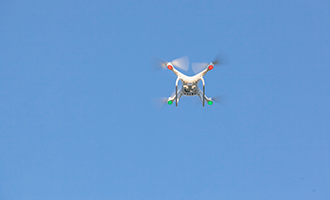Need Help?

Demand for urban air mobility and contactless parcel delivery continues to grow. And with the increasing use of Unmanned Aircraft Systems (UAS) for recreational purposes, occurrences of UAS usage in an unauthorized manner or with malicious intent are on the rise. Sightings of uncooperative drones in close vicinity of commercial airliners and airports have resulted in extensive disruption to operations, with a large impact on the traveling public.
On the other hand, airlines are re-thinking their fleet and business models. Some have announced plans to expand their operations to include electric Vertical Take-off and Landing (eVTOL) aircraft, while others already use UAS for warehouse sorting and last mile delivery.
IATA works on provisions for standards development to enable airlines to operate UAS for the safe, efficient and sustainable transport of goods and people. We also continue to work with the UAS industry and regulators to integrate the new entrants into the shared airspace and drive robust regulations that can accommodate new technologies without negatively impacting commercial aviation.
Need Help?
New Aviation Ecosystem Roadmap
Airlines are investing in new aircraft technologies, e.g., electric Vertical Take-off and Landing (eVTOL), electric Short Take-off and Landing (eSTOL), supersonic, commercial space vehicles, single/remotely piloted. At the same time, new and emerging airspace users, are expanding their operations near/at airports. To prepare for the future ecosystem and initiate the dialogue on required industry actions, IATA set up an ad-hoc forum with representatives from the industry, including manufacturers and operators of eVTOL, eSTOL, supersonic, commercial space vehicles, single/remotely piloted aircraft. The new aviation ecosystem roadmap (pdf) was developed to drive IATA’s work, and influence new policies and standards in this domain.
Unauthorized Unmanned Aircraft in the Vicinity of Airports - New Guidance Material
With the increasing use of unmanned aircraft (UA) for recreational purposes, the occurrences of UA usage in an unauthorized manner, or with malicious intent, is on the rise. Sightings of uncooperative drones in close vicinity of commercial airliners and airports have resulted in extensive disruption to airline and airport operations, with a large impact on the travelling public. IATA worked with an industry group and developed guidance material for the detection, response, and recovery from Unauthorized Unmanned Aircraft in the Vicinity of Airports (pdf).
Industry Initiatives
A Safety Awareness for Users of Remotely Piloted Aircraft (RPA) in Close Vicinity of Airports (pdf) jointly released by IFALPA, ACI and IATA in 2016 means to raise safety awareness among users of drones.
In addition, IATA continues to work with industry partners on defining the future operational environment and identify the assumptions that will need to be re-visited to support the future ecosystem. A high-level concept paper (pdf) on the changing environment for flight rules was developed with industry partners in 2021.
Collaboration with key UAS stakeholders
IATA supports the work of the ICAO Remotely Piloted Aircraft Systems Panel (RPASP) and the Advanced Air Mobility Study Group (AAM-SG) to drive global standards and recommended practices.
Related Videos
